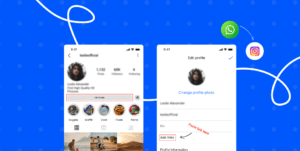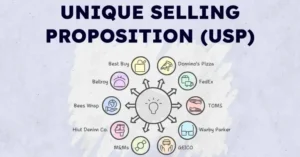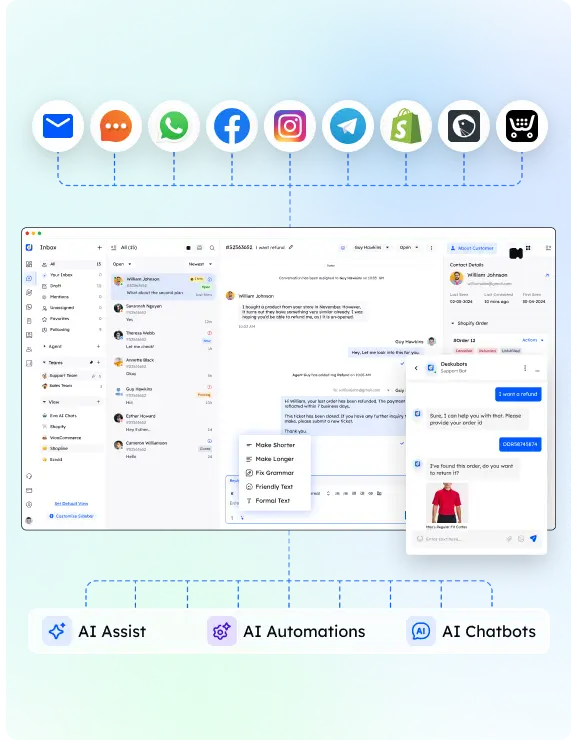What if you know you can integrate Shopify and HighLevel in just a few minutes? Hard to believe! One is an e-commerce giant, and the other is a marketing specialist – two different paths.
Still, it is possible. We have created this 6-minute read guide that will unfold how to integrate Shopify into HighLevel. This Shopify integration has the full potential to bring immense success to your E-commerce business. We’ll also cherish certain reasons that propel you for this integration.
And here’s the expert’s word – If you’re a Shopify Plus user, then a linking to a platform like Highlevel can truly do wonders!
Key Takeaway :
You can integrate Shopify and HighLevel in just a few minutes by following a simple 6-minute guide. This integration has the potential to bring immense success to your e-commerce business, offering centralized data management, enhanced customer journey, improved retargeting efforts, efficient inventory management, personalized marketing campaigns, and seamless sales funnel integration. The process involves gathering necessary credentials, accessing Shopify’s developer area, generating API credentials, logging into your HighLevel account, entering Shopify API credentials, testing the connection, finalizing the integration, and monitoring and optimizing the process. Troubleshooting tips are also provided to address common challenges, such as data synchronization discrepancies, form customization complexity, automation workflow glitches, security and compliance concerns, performance lag during high traffic, and user access and permissions.
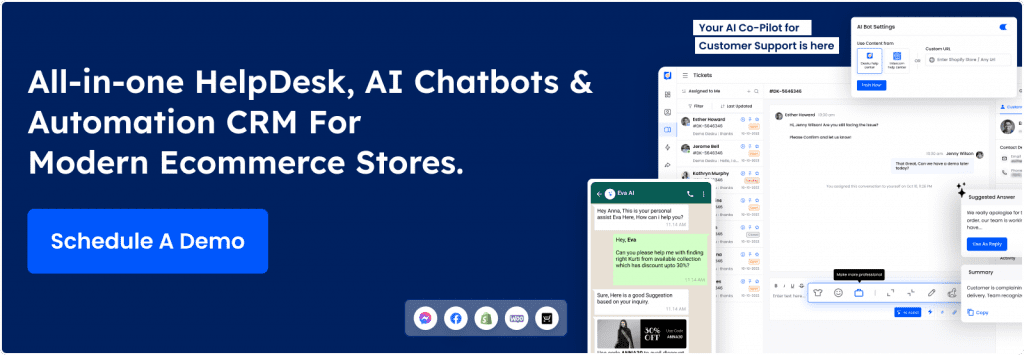
What is Shopify Storefront?
E-commerce stores always look mesmerizing with eye-catching designs and layouts.
But it’s not at all easy to create them on the go. You must manage customer data, product catalogs, product updations, and much more. Of course, it can’t be done single-handedly as it would take many months to get created.
However, one application helps you create it in a few hours. That is none other than Shopify. From e-commerce store creation to management, it will help you handle everything.

Why Connect Shopify and HighLevel?

It is obvious to you why, out of innumerable platforms, we have chosen to advise you on Shopify and HighLevel for integration. Well, here lies the answer:
- Centralized Data Management: In an e-commerce store, you have to manage crucial data like customer details, sales, and much more. It needs to be at a single location where it can be accessed easily. HighLevel’s centralized data management system can help you in such a situation.
- Enhanced Customer Journey: During their first visit to your website, your customers expect directions for navigating. In such a situation, HighLevel’s automation system can help you create workflows to guide your customers in every process.
- Improved Retargeting Efforts: HighLevel automation tools are very powerful. They can even help you out by sending reminder messages to your customers on the basis of their past actions. For example, you can send live sale information to your old customers. This adds extra stars to your sales and marketing.
- Efficient Inventory Management: Whenever you lead any marketing campaign, especially for any product, you must always remain updated with your stocks. And, by having the back of Shopify, you can have a smooth inventory management system. Such a system helps you know the product availability.
- Personalized Marketing Campaigns: Shopify stores all the data related to customers and their purchases in its system. Such data becomes helpful for conducting any marketing campaign via HighLevel.
- Seamless Sales Funnel Integration: As HighLevel is designated for automated marketing processes, it has an amazing sales funnel system. Such funnels help you out in conducting an astounding sales process and increase customer interactions for your e-commerce store if you have embedded HighLevel into Shopify.
So, we can see both HighLevel and Shopify have amazing and unique functionalities. Now, you can think what magic can be created if both are integrated.
Also read: How to Add a video to Shopify Video Banner Section?
How to Connect HighLevel to Shopify API in a matter of minutes

Step 1 – Gather Necessary Credentials:
- Before starting the seamless integration process, it is necessary for you to have all the required credentials, like username and password, for logging in to both platforms.
Step 2 – Access Shopify’s Developer Area:
- Using your credentials, you need to log in to Shopify’s admin panel.
- Once logged in, you need to click on ‘Manage private apps’ from the ‘Apps’ tab.
- Now, you need to click on ‘Create a new private app.’’
- Finally, you need to fill in HighLevel’s required details and grant authoritative permissions.
Step 3 – Generate API Credentials:
- Once you successfully fill in all the details, Shopify will give you some credentials like a password and API key. These credentials are very important as they will be needed at the time of integration.
Step 4 – Log into Your HighLevel Account:
- Once logged in, you need to go to the named “settings or integrations”(name may vary depending on the version)
- Then, you need to click on the ‘Add a new connection/API’ button.
Step 5 – Enter Shopify API Credentials:
- At the end, you would be required to enter the password and API key you got from Shopify in the data fields.
- Finally, you will be asked to enter your store’s URL address.
Step 6 – Test the Connection:
- At the end of the process, you would find a ‘Test the connection.’ You need to click that to make sure the connection is set.
- In case you find any issues, you should immediately check your Shopify’s entered credentials. Plus, it is important for you to ensure that you have granted access permissions to HighLevel or not.
Step 7 – Finalize Integration:
- Once the connection is established, integration is finalized, after which HighLevel will be able to send and receive data from your Shopify store.
Step 8 – Monitor & Optimize:
- In the beginning stage, you always need to keep an eye on every process to make sure the integration is working smoothly. Run a trial with your support team if you want.

Optimizing Customer Engagement: Strategies and Best Practices
You must build strong customer relations to conduct a successful e-commerce business for years. And it can happen only if you have strong and amazing marketing strategies. That’s why we have brought to you some amazing strategies that would help you get spellbound customer engagement.
Marketers no longer have a place for one-size-fits-all marketing. It is no longer enough for today’s consumers to have a general sense of being involved in an experience that concurs with his or her preferences.
Turn customer information into personalized interaction. Provide personalized product recommendations, tailored messages, and exclusive deals using information about previous purchases, browsing patterns, and user metrics. Responding and recognizing the uniqueness of each customer helps to create an experience that would lead to conversions.
Strategic Email Mastery: Cutting Through the Inbox Clutter
As such, email is still among the pillars of digital communications. However, it is the art to stand out amidst jammed Inboxes. Categorize your target audience by looking at things like age, action they take, and their personal preferences when choosing a message that speaks right to them.
Do not be afraid of using dynamic content in order for your emails to change as per the recipient’s movement around and make personalized recommendations of products or offers to them exclusively. This enables you to send an appropriate message to the correct audience at the required moment, increasing not only open and click-through rates but also fostering durable client relations.
Social Media Alchemy
Many people have a misconception that social media platforms can be used only for marketing purposes. But that’s half the reality. The other half is that social media platforms can also become a good communication medium with your customers.
You can create groups where you can share your store’s achievements and useful information like new product launches, sales, and much more. Moreover, you can even enhance client communication by commenting back. So, there’s so much to do with social media platforms.
Also read: How to Put Icon Images in Shopify Footer
Engaging Beyond Clicks
It’s very important to remain updated regarding what your customers want to see in your online store. And achieving that is very easy. Thinking about it? Well, conducting polls and quizzes on a timely basis can help you achieve it. And it’s a good way of engaging your customers.
Keep in mind, in today’s era, customers like shopping from stores that value their opinions. Such interactive conversations would also allow you to keep your store filled with the latest and trending products.
Behavioral Triggers: Anticipate, Respond, Delight
This automates HighLevel, allowing for a trigger-led anticipatory engagement. Deliver personalized messages or exclusive offers by setting up automated responses that are triggered by customers’ actions. Through this process, you create emails that are customized to the specific customer journey of a shopper or new subscriber.
Omni-Channel Harmony: Consistency is Key
Not all the e-commerce brands succeed. Some do fail. A big reason for their failure is that they are not able to maintain consistency on different platforms. So, whether it’s about your website or your client communications on different platforms, keeping your brand’s identity the same on all platforms is vital. This would establish trust in your customers for your brand, eventually enhancing customer bonding.
Feedback Loop Finesse: Continuous Improvement
If you are the one who wants to enhance their e-commerce brand’s presence, then you should always be willing to have customer feedback. This is the one thing that can help you become better in the long run.
Feedback lets you know which products from your collection are getting likes and which are failing. Moreover, it also gives you insight into your delivery services. So, feedback becomes valuable in enhancing customer experience.

Data-Driven Enlightenment: Analytics for Action
For an e-commerce website, you would always have to keep an eye on every process. There cannot be a better way for this than the data analytics for the online store. It would give you all important insights into your website, like website visits and clicks on the go.
Effortless Support Excellence: Introducing Desku for Shopify
As your Shopify store grows, so does the need for scalable solutions. In such cases, an automated customer support solution like Desku is designed to grow with you. It offers you flexibility and scalability to meet the evolving demands of your eCommerce business. Also, you will experience an increment in both customer engagement and sales by adding Desku.
Common Challenges and Troubleshooting Tips

It’s obvious that you will face some hurdles while integrating Shopify with HighLevel. Even some hurdles would be unexpected, and resolving them would become a bit difficult. We have enlisted here some common challenges that you might face during integration.
1). Data Synchronization Discrepancies:
Challenge: There are high chances of data loss if the two platforms are not synced properly.
Troubleshooting Tip: To prevent this issue, the best thing you can do is perform daily audits. This would help you avoid any kind of dispute in the future. Moreover, you should ensure that both platforms follow the same data policies.
2). Form Customization Complexity:
Challenge: HighLevel and Shopify are following different form creation methods. So, an issue might occur at the time of form submission.
Troubleshooting Tip: HighLevel customization tools are simple. So, we recommend creating forms in Shopify with simple fields and data types. Besides this, you can regularly submit forms with different designs to see which are accepted by HighLevel and which are not.
3). Automation Workflow Glitches:
Challenge: Sometimes, automation, like messages, would work late, which disturbs the workflow process.
Troubleshooting Tip: It’s always better to test the automation before the final trigger. Such testing would prevent such hurdles and save you from having a bad impression on your customers.
4). Security and Compliance Concerns:
Challenge: As both platforms are different, it’s obvious both will have different security protocols. Such a difference would result in data loss.
Troubleshooting Tip: Regarding security standards, we recommend staying updated on both platforms to avoid any kind of clutter in the future.
5). Performance Lag during High Traffic:
Challenge: There is a high chance that integration might not take the load of high traffic, which would result in low performance.
Troubleshooting Tip: You should be ready to scale your resources to bypass the heavy traffic load. Plus, opting for a strong server would also be a better option.
6). User Access and Permissions:
Challenge: Weak user user access controls would welcome unauthorized actions.
Troubleshooting Tip: It will be better to grant access protocols based on the user level. This would prevent unauthorized scenarios.
You should, therefore, consider anticipating such usual challenges in troubleshooting strategies, and this will help you develop a robust Shopify and HighLevel combination with more durability and efficiency.
Being able to solve any challenges concerning the linkages between your e-commerce forms and marketing automation workflows quickly requires regular monitoring, testing, and being updated on notifications from both of these platforms.
Do you want to save more time paying attention to fixing the existing errors in your store, but the regular customer support requirements are eating up a lot of time? Try Desku, the best AI customer support software, to save both time & revenue with this affordable solution.

Future-Proofing Your E-Commerce Strategy
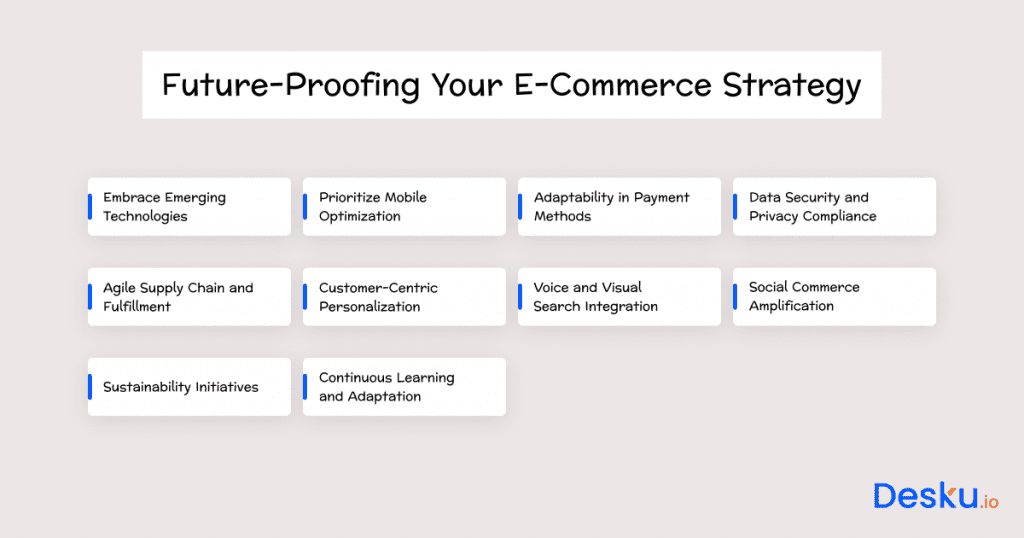
Here we will have a glance at future updates that you need to take care of:
1). Embrace Emerging Technologies:
As technologies like AI are increasing quickly, you also need to keep your e-commerce website updated with them. You can include the latest functionalities like voice search and chatbots. This would eventually help you enhance the customer experience.
2). Prioritize Mobile Optimization:
Today, 80% of your online customers will be using mobile devices. So, you need to have a mobile-friendly website that would serve a consistent user experience on all platforms.
3). Adaptability in Payment Methods:
In a world containing numerous payment methods, we don’t know which payment gateway our customers would prefer. Instead, you should allow digital payment through any payment gateway.
4). Data Security and Privacy Compliance:
Your customers are going to trust you for their data privacy, especially the payment details. So, your website must follow strong security protocols to prevent any sort of data loss.
5). Agile Supply Chain and Fulfillment:
Supply chain demands are going to be dynamic. And, there is no one-fit solution for all. You can instead apply supply chain agility to maintain your productivity.
6). Customer-Centric Personalization:
Keeping an eye on customers’ actions, like past search histories and purchase histories, is important. Such insights become helpful in recommending products to them. As you streamline your approach, there will be fewer abandoned carts, more new order engagement, a more user-friendly approach toward customers, and fewer marketing efforts.
7). Voice and Visual Search Integration:
Voice and visual assistants have changed the way we search the web. You should also include these kinds of chatbots in your e-commerce website. Simply click or voice search, and your desired window will pop up in no time. What can be more convenient for a customer?
8). Social Commerce Amplification:
When it comes to e-commerce, we cannot forget about social media platforms. They are a good way of marking your e-commerce brand. So, you should have a strong social media handle for your brand.
9). Sustainability Initiatives:
While being in an e-commerce business, you can sustain our environment by including eco-friendly packaging ways. This will also drive a good impression on your consumers.
10). Continuous Learning and Adaptation:
The E-commerce business is evolving every day. This includes involvement in new technologies. So, you should always be open to learning and adapting new things on your website.

Conclusion
We learned how to connect high-level to Shopify in this 6-minute guide. Here, we have discussed many noteworthy things about both HighLevel and Shopify, like why we should integrate these two gigantic platforms, the integration process, and the challenges you would face in this integration.






